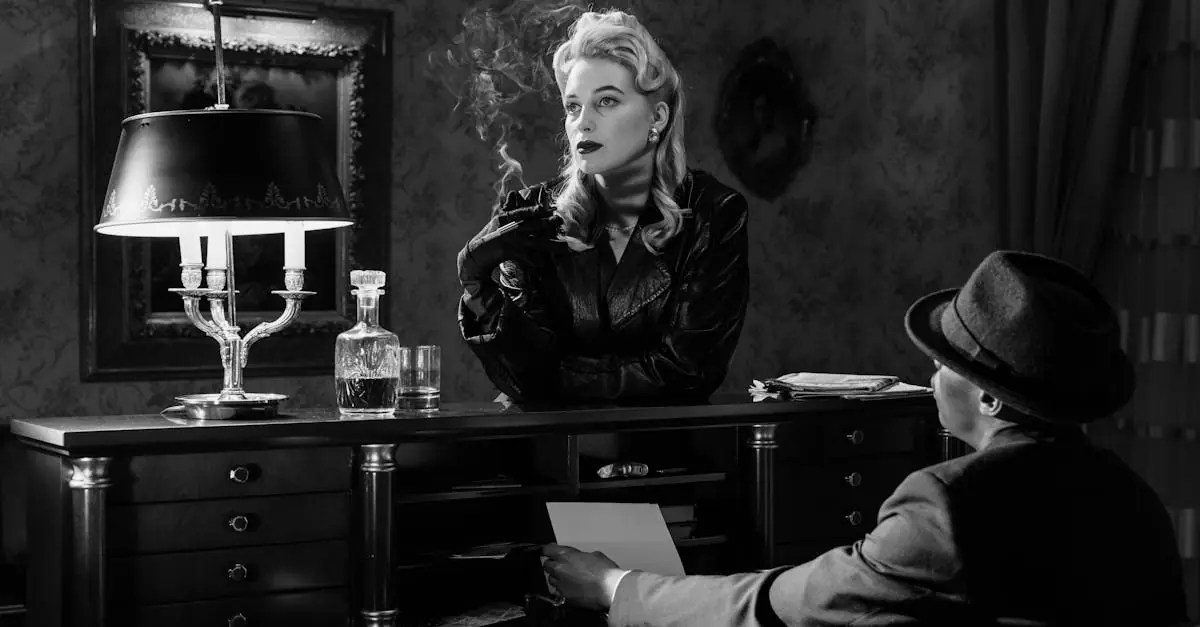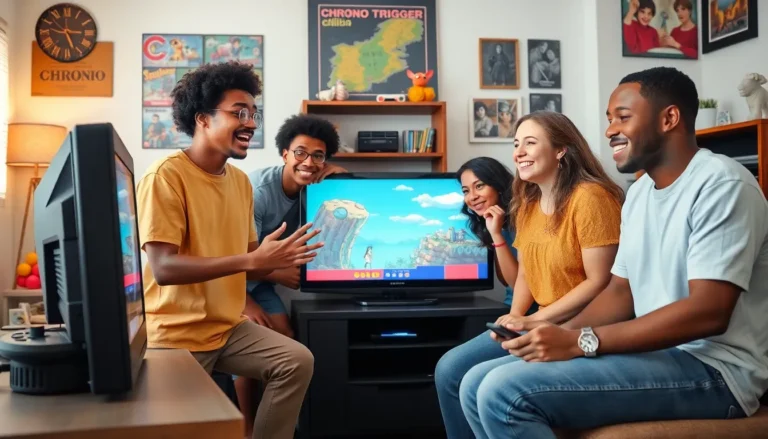Table of Contents
ToggleEvery movie lover has encountered that moment when a plot twist leaves them scratching their heads. You know the ones—those glaring plot holes that make even the most devoted fans question their favorite films. It’s like finding a sock in the dryer that clearly doesn’t belong. How did that happen?
Whether it’s a superhero who defies the laws of physics or a character who makes decisions that defy all logic, these cinematic blunders can be both hilarious and frustrating. They make for great conversation starters and even better memes. So grab your popcorn and get ready to dive into the wild world of movie plot holes, where logic takes a backseat and entertainment reigns supreme.
Understanding Movie Plot Holes
Movie plot holes refer to inconsistencies in plot development that disrupt narrative coherence. They often leave viewers questioning character motivations and storyline feasibility.
Definition of Plot Holes
A plot hole occurs when a story contains gaps in logic or faulty reasoning. These can manifest as unexplained character actions or contradictions within the plot. For example, in a film where a character possesses superhuman strength, later scenes might undermine this trait if they exhibit vulnerability. Understanding what constitutes a plot hole enables audiences to analyze narrative structures more critically. Identifying such gaps keeps viewers engaged and facilitates deeper discussions about the film’s integrity.
Importance in Storytelling
Plot holes significantly impact the storytelling experience. They can break immersion, causing viewers to disengage from the narrative. A well-crafted story maintains internal consistency, enhancing audience satisfaction. Characters that behave illogically or face impossible scenarios challenge the viewer’s willingness to suspend disbelief. Directors and writers often aim to craft seamless narratives where plot threads weave together, ensuring that each decision aligns with established rules. A cohesive storyline fosters emotional investment in characters and their journeys.
Common Types of Movie Plot Holes
Movie plot holes often manifest in specific forms. Identifying these common issues enhances audience awareness of storytelling flaws.
Inconsistencies in Character Actions
Character actions sometimes contradict established traits or motivations. A protagonist may exhibit bravery in one scene yet display cowardice in another. Audiences notice these inconsistencies, leading to confusion over character development. For instance, a character might suddenly change loyalties without explanation. This lack of continuity in behaviors disrupts immersion, causing viewers to question narrative integrity. An in-depth analysis of character arcs reveals essential connections that bolster audience engagement.
Logical Errors in Plot Development
Logical errors frequently appear in plot structures. Events occasionally unfold that defy established logic or reason. A character’s ability to escape danger effortlessly might conflict with prior stakes set in the story. Unexplained events, such as a time jump without context, lead to viewer frustration. These pitfalls affect overall clarity, reducing narrative cohesion. When logical consistency wanes, audiences struggle to connect with the story. Identifying such errors empowers viewers to engage more critically with cinematic narratives, fostering thoughtful discourse around films.
Notable Examples of Movie Plot Holes
Various films exemplify plot holes, showcasing inconsistencies that provoke viewers. Below are notable examples from classic films and recent releases.
Classic Films with Plot Issues
“Casablanca” features a glaring plot hole regarding the character of Rick Blaine. His backstory suggests a ruthless demeanor, yet moments later, he demonstrates unexpected altruism. Another example arises in “Back to the Future,” where Marty McFly’s existence hinges on the actions of his parents. The film neglects to explain how Marty continues to exist after altering their first meeting. While these films remain iconic, they reveal gaps in their narratives, leading to viewer confusion.
Recent Releases and Their Critiques
“Star Wars: The Rise of Skywalker” encountered criticisms for its plot inconsistencies. Characters display sudden abilities that lack adequate exposition. Similarly, “Jurassic World: Fallen Kingdom” presents a scenario where dinosaurs escape yet later show limited intelligence. Audiences noted these inconsistencies detract from the overall experience, illustrating that even contemporary films struggle with maintaining logical coherence. Recognizing such plot holes encourages viewers to engage more critically with modern storytelling.
The Impact of Plot Holes on Audience Experience
Plot holes significantly affect how audiences experience a film. They often lead to confusion, frustration, or even amusement. A viewer’s immersion diminishes when inconsistencies in the narrative arise, impacting overall enjoyment. Familiarity with characters may break down if their actions contradict established traits, leaving fans disappointed.
Viewer Engagement and Disappointment
Engagement often hinges on a film’s internal logic. When plot holes disrupt narrative flow, viewer investment declines. Audiences seek coherent stories that allow them to suspend disbelief. Occasional laughter can arise from an illogical twist, but massive inconsistencies provoke disappointment. A film failing to maintain its own rules results in negative viewer reactions. Even passionate fans may feel let down when beloved characters act irrationally or when storylines contradict earlier developments.
Influencing Reviews and Ratings
Plot holes frequently influence film reviews. Critics often highlight glaring inconsistencies, which can result in lower ratings. Viewers share their opinions widely, contributing to audience scores on platforms. Glaring errors may overshadow strong performances or stunning visuals, minimizing the overall experience. Journalists and bloggers alike identify these flaws in their critiques. Negative commentary about plot holes signals to potential viewers that the film may not meet expectations.
How Filmmakers Can Avoid Plot Holes
Filmmakers can employ strategic methods to minimize plot holes and enhance narrative coherence. Addressing key elements strengthens storytelling.
The Role of Screenwriting and Editing
Screenwriters must create detailed outlines to ensure logical flow. Careful character development prevents inconsistencies in traits and motivations. Editing plays a crucial role in refining the script, identifying gaps, and correcting errors. Collaborating with other writers can reveal overlooked issues, fostering a more cohesive narrative. Reviewing scripts during various stages helps catch inconsistencies early, allowing for adjustments that maintain internal logic.
Importance of Continuity Checks
Continuity checks are vital in maintaining narrative consistency throughout a film. Regular audits of character actions and plot developments spot deviations that may confuse viewers. Properly tracking details, such as character locations or emotional states, reinforces storyline integrity. Implementing checklists for scenes assists the production team in ensuring visual and narrative harmony. Film productions benefit from detailed notes on character arcs and plot points, fostering a seamless viewer experience.
Movie plot holes remain a fascinating aspect of cinematic storytelling. They serve as reminders that even the most beloved films can stumble in logic and coherence. While some viewers may find amusement in these inconsistencies others might feel frustrated or let down. Recognizing plot holes encourages audiences to engage more critically with narratives and enhances their overall viewing experience.
Filmmakers have the opportunity to refine their storytelling by prioritizing narrative coherence. With careful planning and collaboration, they can minimize plot holes and create more satisfying films. Ultimately, the conversation around plot holes enriches the film community, providing endless opportunities for analysis and discussion.




